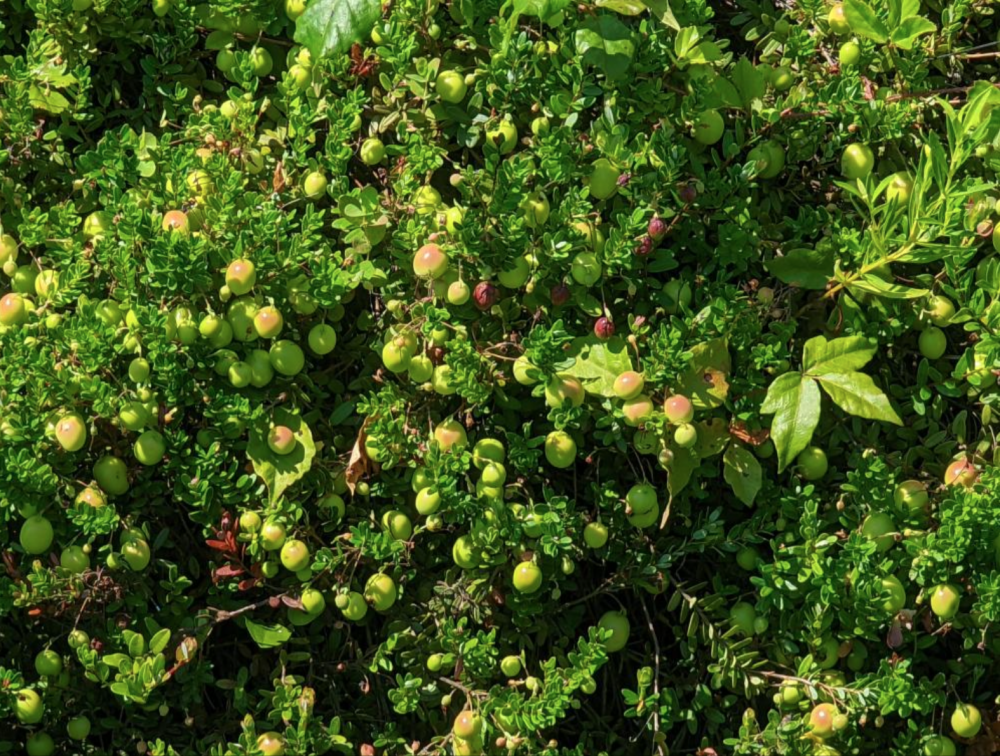Cranberry growers on alert as heat wave, drought sweep state
You think you’ve felt the heat over the past week? Try being a cranberry.
After a week of high heat and significant drought in the southeastern part of the state, local cranberry growers are facing the potential consequences of a hot, dry July.
“We’ve had so much dry heat that people’s water is getting all used up. It’s going to be a difficult harvest for a lot of people,” said Greenwood Hartley III, a Rochester resident and Select Board member who grows on 11.5 acres locally.
Giverson Mupambi, an extension assistant professor at the UMass Cranberry Station, researches cranberry production and applied studies on the Massachusetts cranberry industry. He described the effects that prolonged, high heat and lack of water have on cranberries.
If cranberries experience heat stress, they can scald, Mupambi said. That scalding then leads to fruit rot, which hurts growers’ final yields in the fall.
“We’re getting these extreme weather conditions as the weather is changing where it’s hotter than usual or rainier than usual,” said Hartley. “It’s difficult for any farmer. Everybody is really struggling.”
As of last week, the entire state was declared as experiencing a drought, with regions differing in severity. The southeast region, which includes the Tri-Town, was declared a “significant drought” by the state’s Executive Office of Energy and Environmental Affairs.
The lack of rain is compounded by a heat wave that rolled across Massachusetts in recent days. Around 87 degrees is the danger zone for cranberry heat stress, Mupambi said.
Highs for the Tri-Town are hovering around the mid 80s for the week of July 25, on some days just below the risk threshold for sun scalding. In a town known for its hundreds of acres of cranberry bogs, that can be worrying for some growers.
“We cool the cranberries by putting water on them in the early morning, running the sprinkler system for an hour or two, and if it’s incredibly hot we might do that again,” said Hartley.
He says that even though it’s been tough with the heat and humidity, “so far we’ve been able to manage. The crop looks good.”
However, Hartley added that this takes thousands of gallons of water, which is expensive. “This is grinding up the cost of growing cranberries,” he said.
The heat and lack of rain hasn’t ruined their cranberries just yet, Freetown grower Dawn Gates-Allen said on Monday, but it’s clear that the plants are reaching their limits. Even as rain was expected on Monday, the short burst of cool air could create hail conditions, which could also damage cranberry growth.
“We’re not seeing scald, but we do see that the plant looks like it’s working hard,” Gates-Allen said. She also serves as the director of member and financial services for the Cape Cod Cranberry Growers’ Association, which represents about 330 growers in the state, its website says.
Gates-Allen said that plants now are using much of their energy for respiration and cooling. It looks like cranberry bogs might need more nutrition to keep up the work, she said, and more days with forecasted temperatures in the high 80s are expected yet this month.
The weather conditions mean that growers must use more water to help their bogs grow and, for some growers, cool off their berries.
Evaporative cooling is an irrigation method that some use to reduce heat stress, Mupambi said, where growers apply water to their cranberries during the hottest part of the day. Mupambi said he’s had growers reach out recently with questions about using evaporative cooling methods to reduce heat stress.
“You end up using a lot of water,” he said.
Hartley uses this method, saying that they put out the water “like a sacrificial lamb” for it to evaporate.
Gates-Allen said that many growers use technology to monitor the moisture in their bogs’ soil, which helps them ensure the bogs are adequately irrigated and healthy. Upland bogs, for example, have been drying out more quickly, Gates-Allen said, so growers have to be aware and water their bogs more often.
Growers are looking forward to more rain and cooler days, Mupambi said, so they don’t have to turn to resource-heavy cooling methods.
Gates-Allen said that research is still coming out on the effects of adding water to bogs on especially hot days. Some growers have concerns, she said, that if bogs are cooled with water but the outside temperature soars, the water could steam and further harm the berry.
Ultimately, she said, there’s still about two months before bogs around the state begin harvesting their berries, and growers are trying to follow recommended guidelines for keeping their cranberries in tip-top shape — despite the extreme weather.
“I think we’re just hoping Mother Nature cooperates with us,” the grower said.












